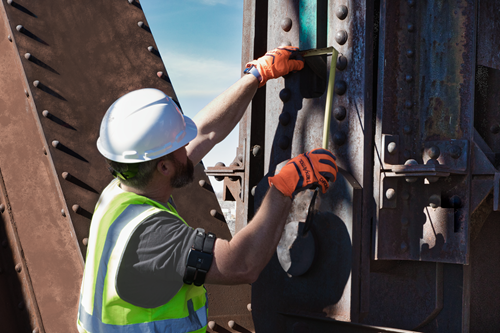KANSAS CITY, MO (Jan. 18, 2022) – Record-breaking temps of 2021, including in July, the earth’s hottest month ever with 200 million Americans under heat advisories, increased worker deaths – from produce pickers to construction crews to garbage collectors. Extreme temperatures are expected to result in annual losses of two billion labor hours and $162B in wages, with every 10 degree (F) temperature increase causing a 393 percent uptick in hospitalizations for heat exposure.

In 2022, the problem is getting attention: President Biden has announced emergency Federal Heat Rules and tasked the Occupational Safety and Health Administration (OSHA) to set new standards. Tech entrepreneurs are innovating ways to track and prevent the dangers of heat on the body.
“There is new tech that can save workers’ lives,” said Heidi Lehmann, a tech entrepreneur whose latest venture is Kenzen, maker of a wearable device that monitors workers’ physiology to predict and prevent heat injuries and deaths. “Progressive employers are already incorporating tech that tracks worker wellness.”
Kenzen has equipped first responders, miners, and workers in construction, energy, steel, and manufacturing with sensors that continuously monitor their physiology to assess core body temperature, sweat rate, and exertion. She welcomes legislation that will mandate the care needed for overheated bodies – breaks, water, and cooling techniques – yet warns that standards should not be one-size-fits-all. Biological sex, age, fitness, acclimatization, and other individual factors dictate what each worker needs to stay safe and productive.
“Heat monitoring is key to achieving ‘Total Worker Health.’ Every person has a different threshold for being able to withstand hot temperatures and hot work. Across-the-board mandates will not curb the alarming statistics. Advanced technology for a personalized approach needs to be part of the solution.”
Kenzen sensors gather tens of thousands of data points per worker per shift. Through research and validation with top universities and use of its system by more than 50 companies, Kenzen has amassed the largest known dataset of continuous core body temperature in the world.
The Kenzen device warns workers, via haptic vibration, when their physiology indicates danger of heat stress. Managers get an alert via an app when a worker needs an intervention to stay safe. A second alert indicates when the worker’s body is ready to resume work. Corporate safety leaders use an analytics dashboard to make enterprise-wide decisions to minimize heat risks, reduce injuries, and improve productivity. They may adjust work schedules or assign certain tasks to individuals. Throughout the process, personal data is protected; only workers can view their health information while others only see what is necessary to keep workers safe.
“Worker heat health is at the forefront of industry in 2022,” said Lehmann, whose backers include Working Capital Fund, which invests in companies that meet the growing demand for more transparent and ethical supply chains that protect workers.
Contact: Beth LaBreche, PR for Kenzen, 612-578-2834 or beth@labreche.com.
